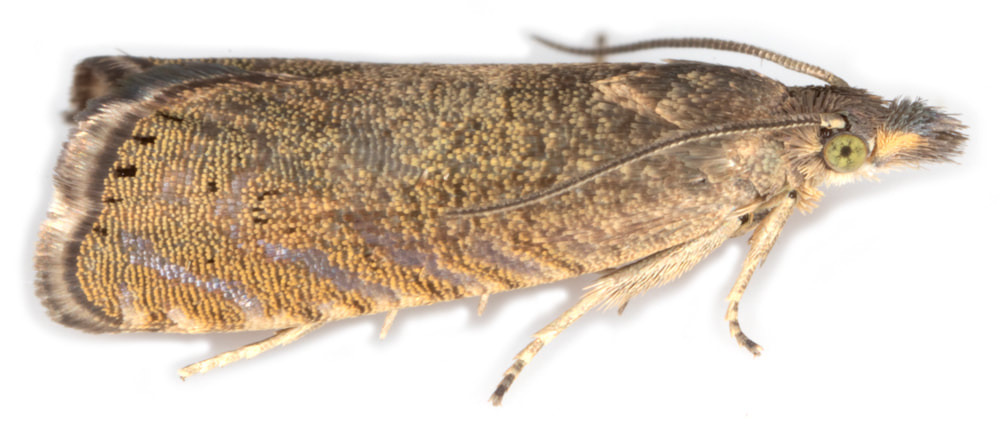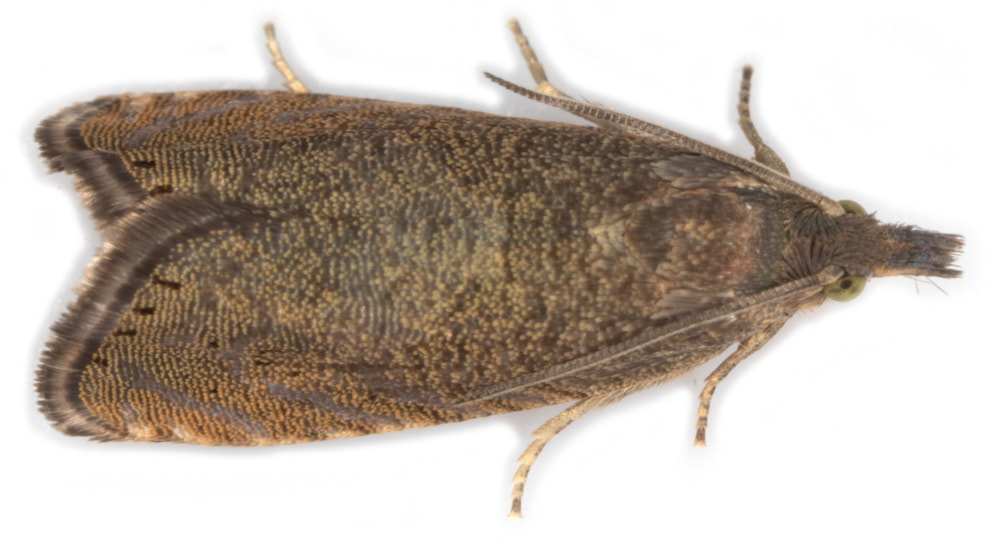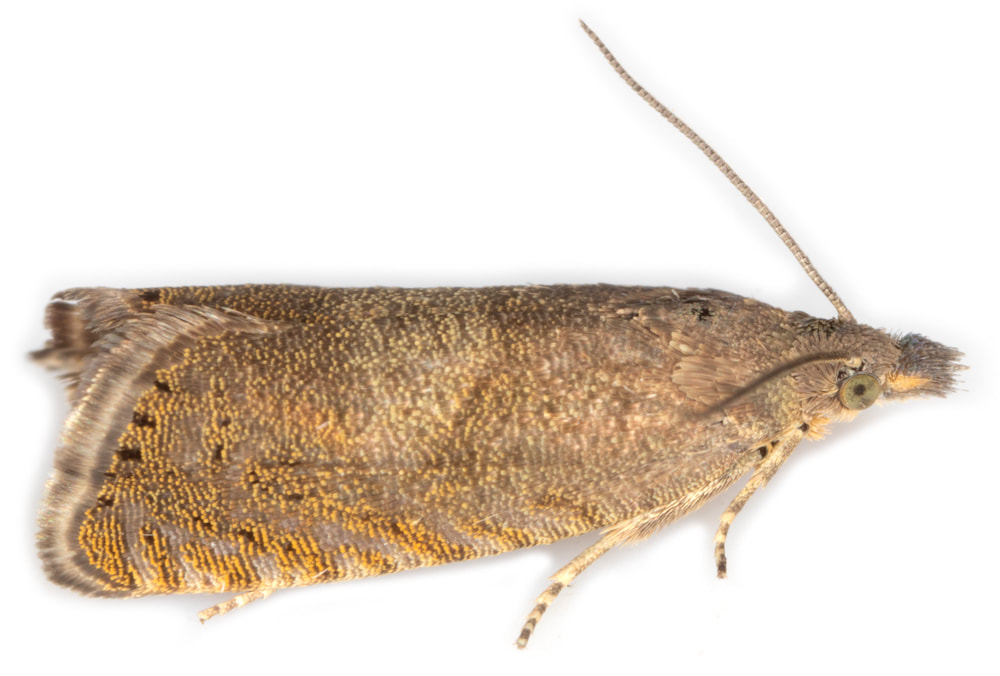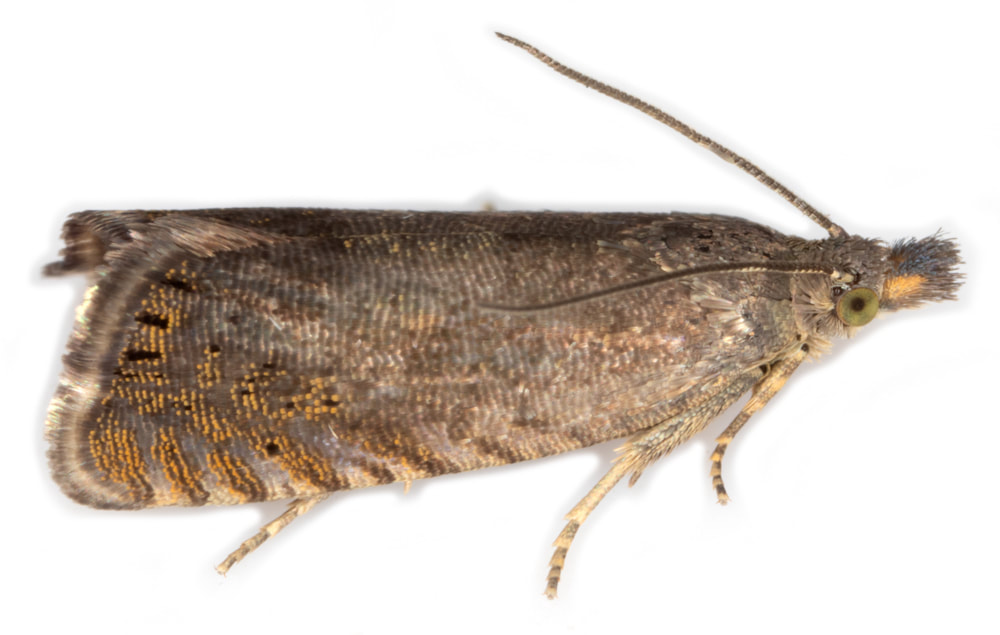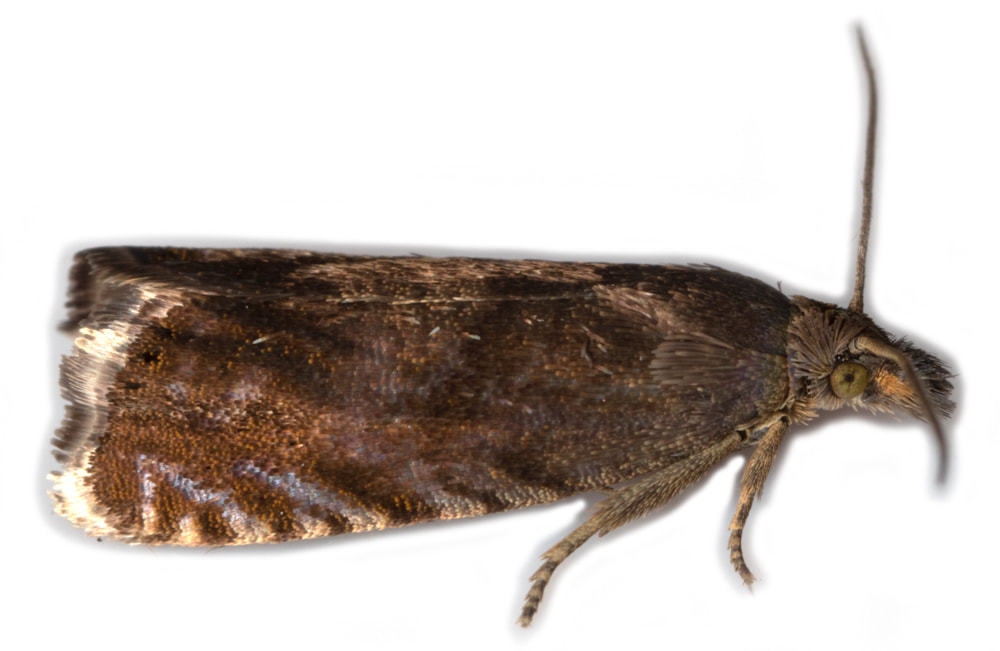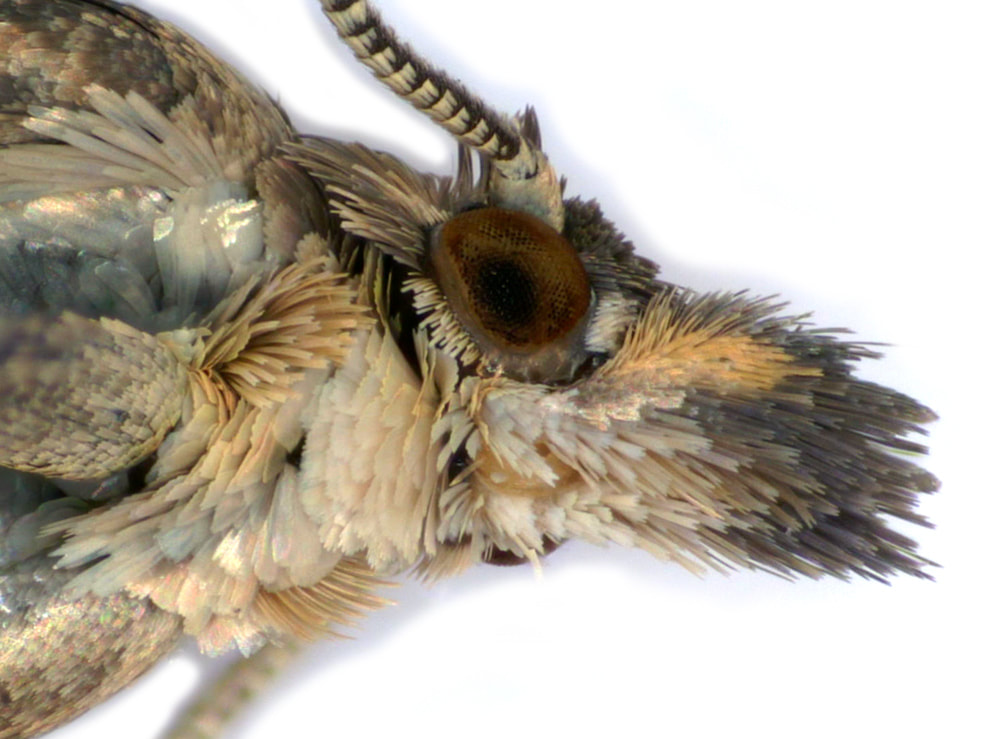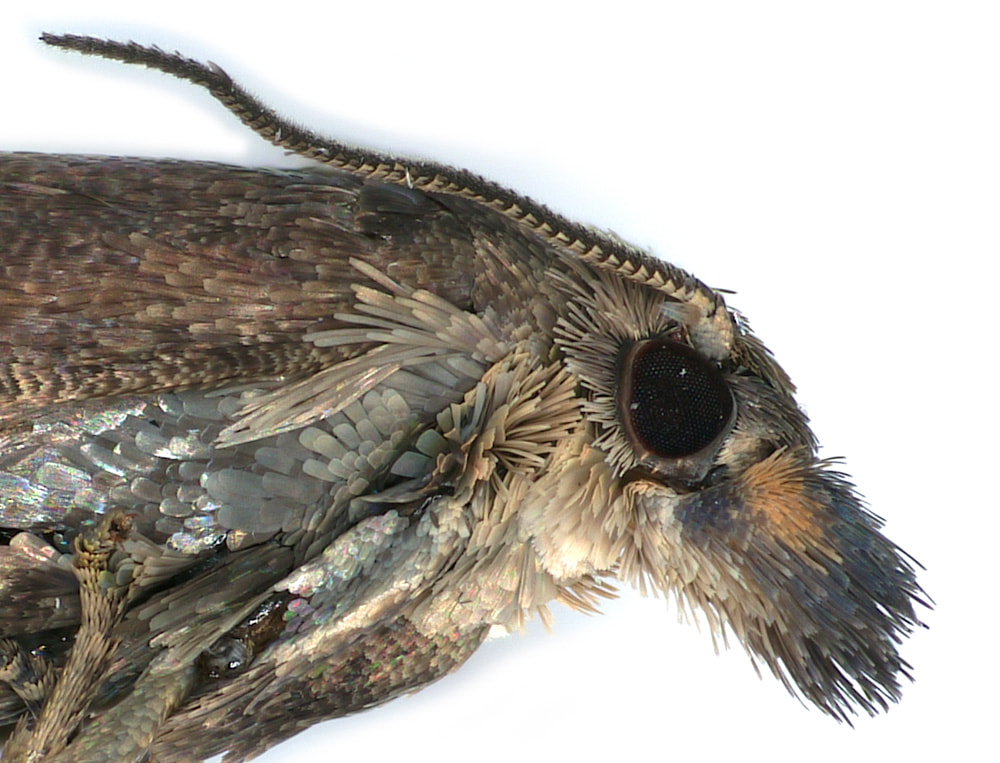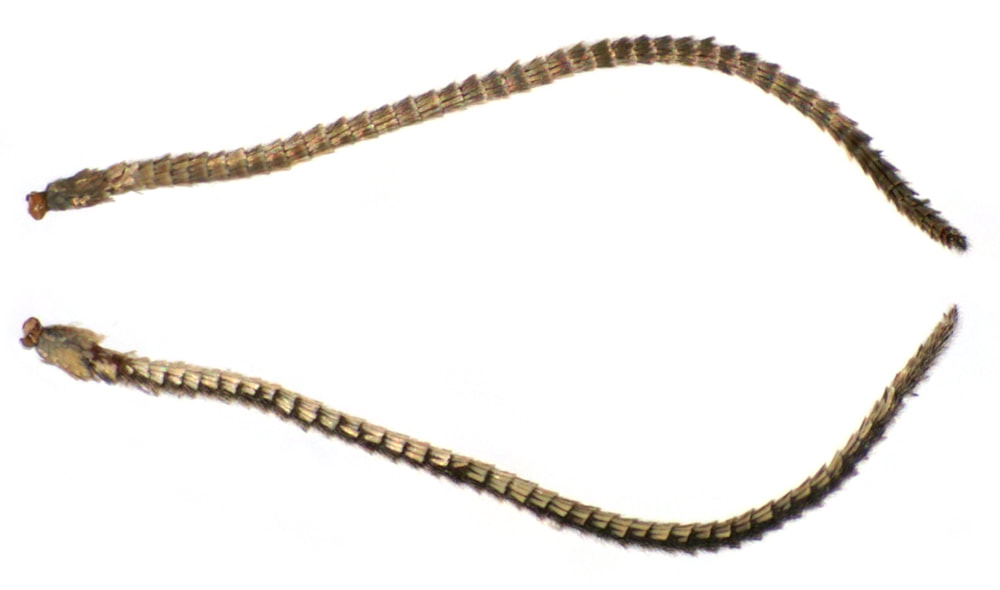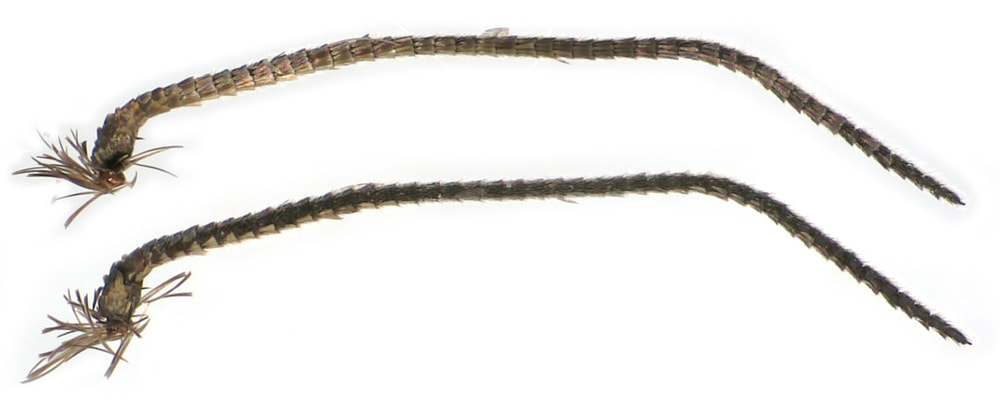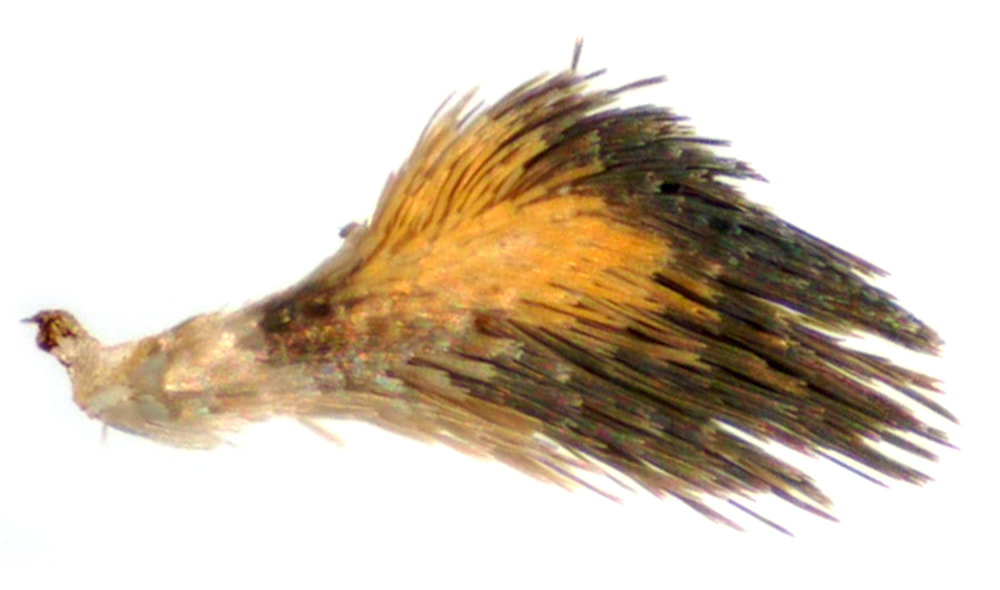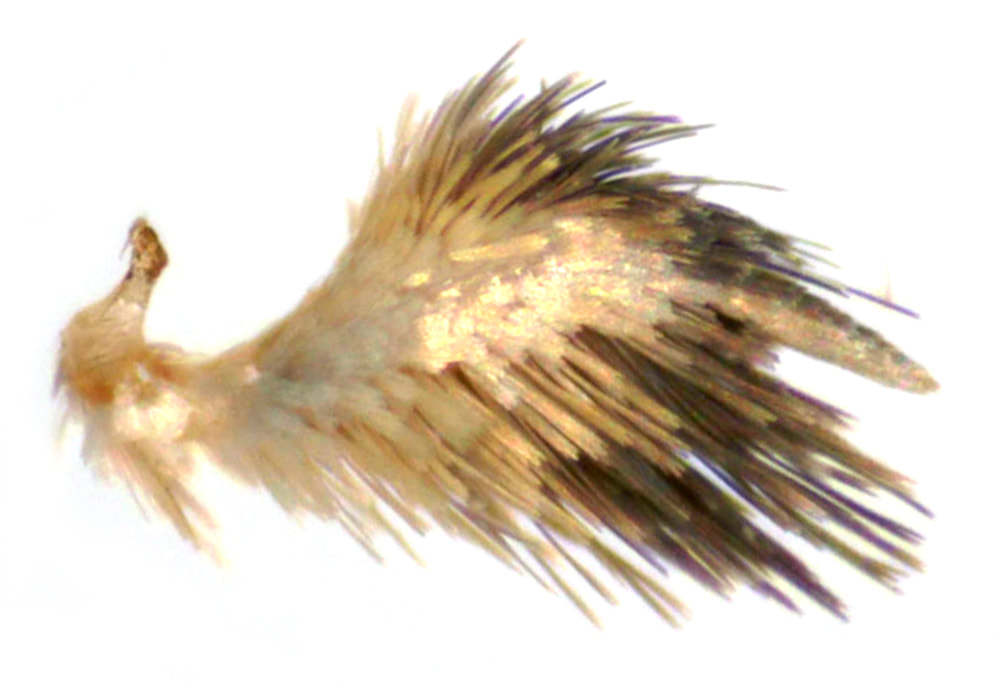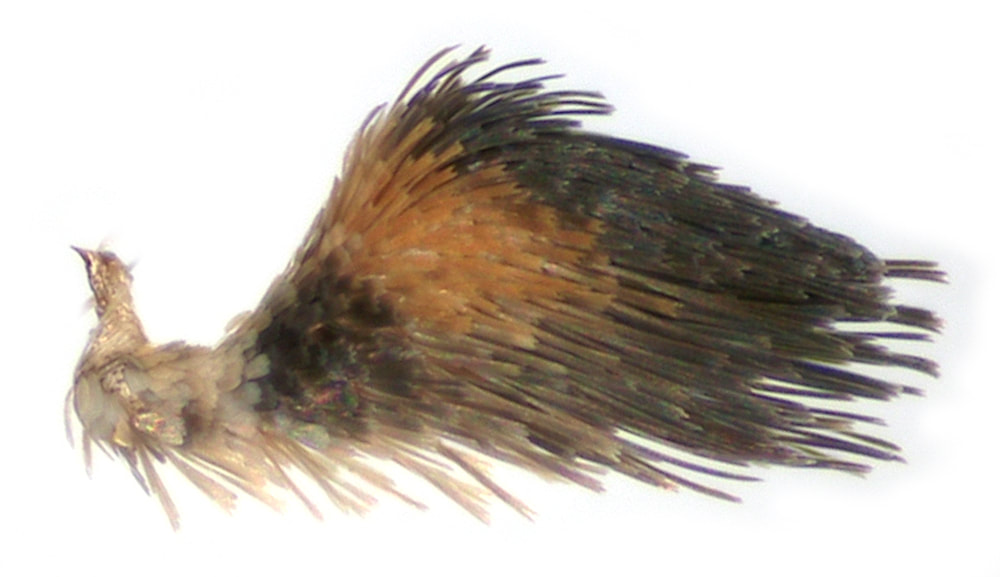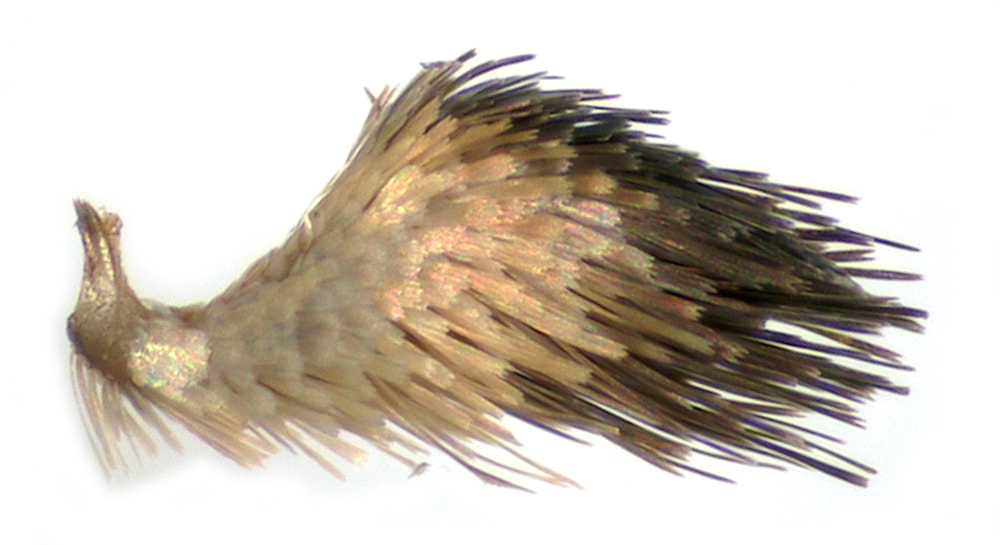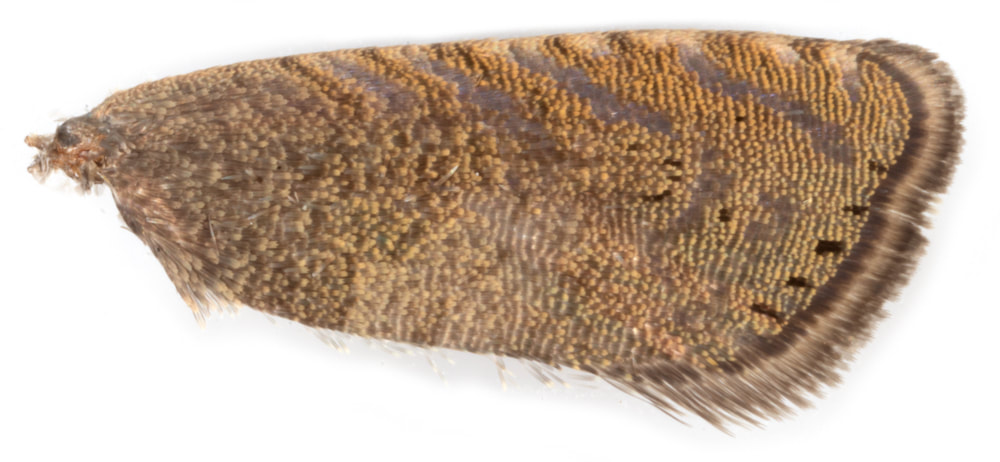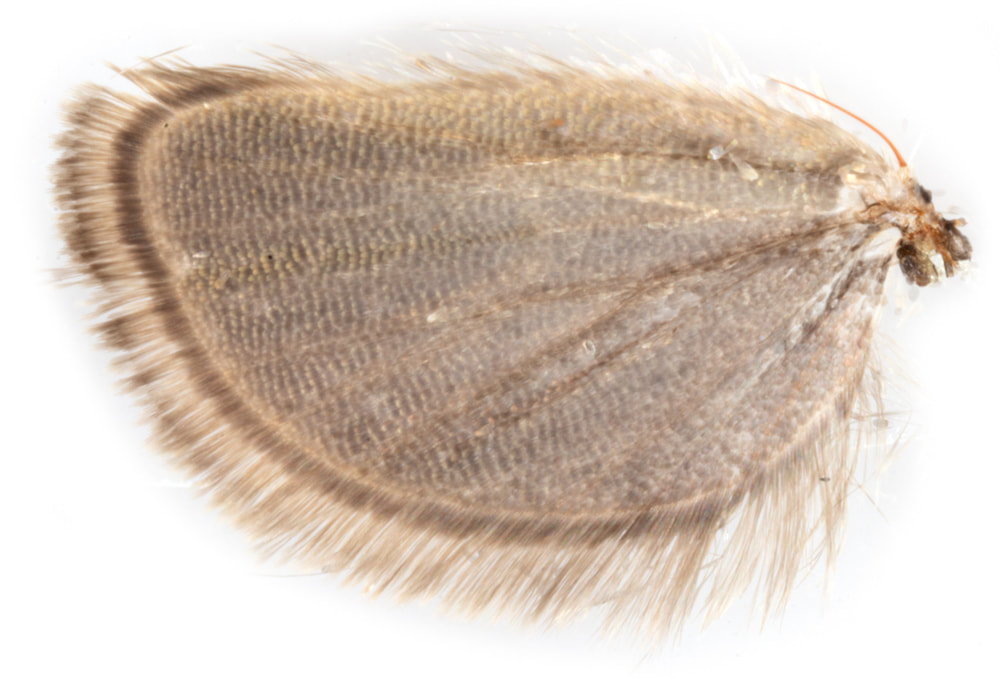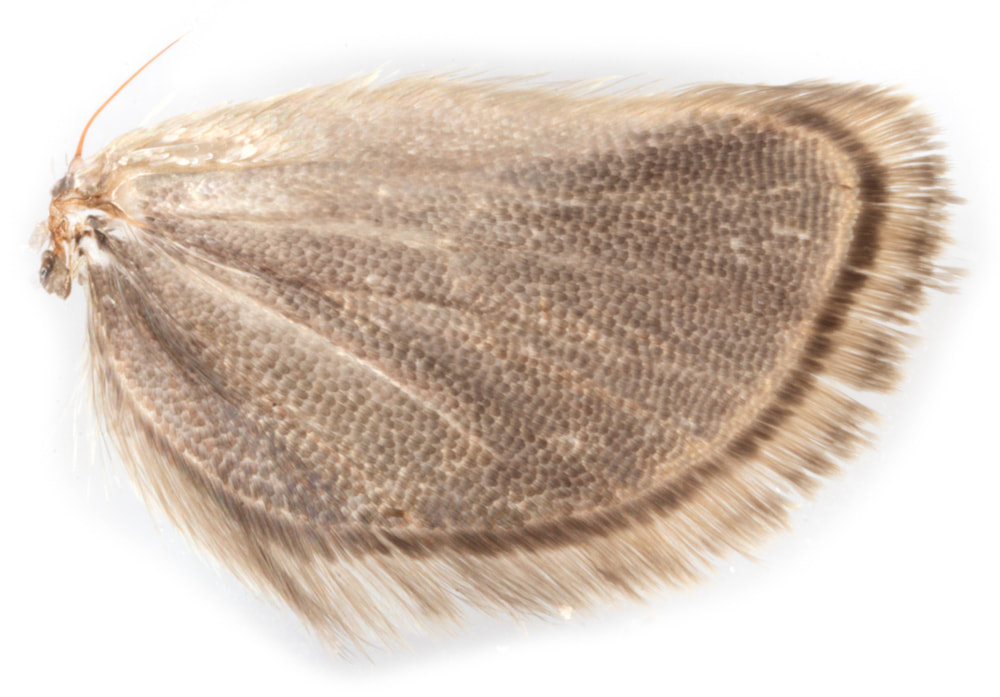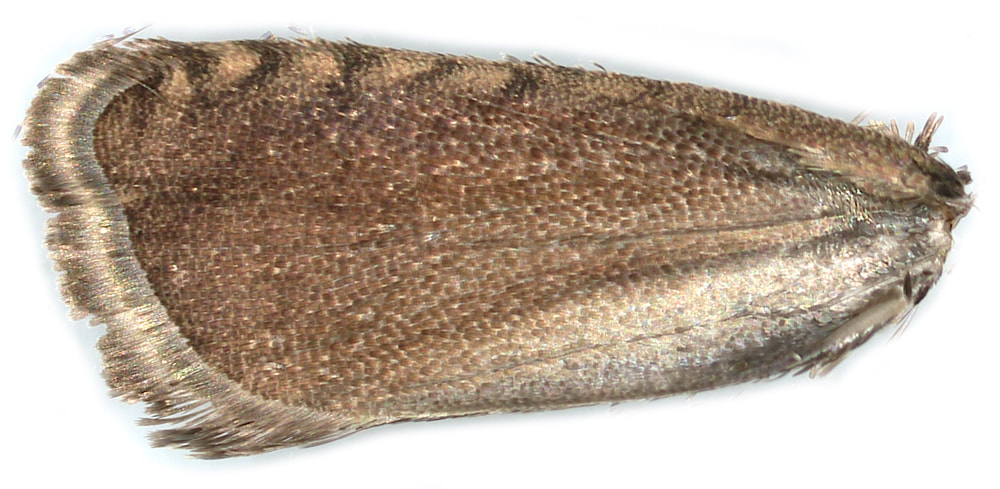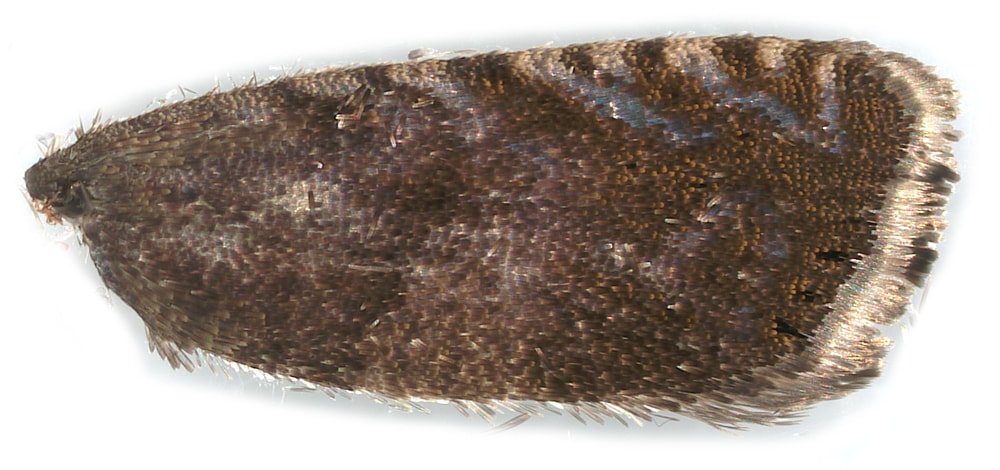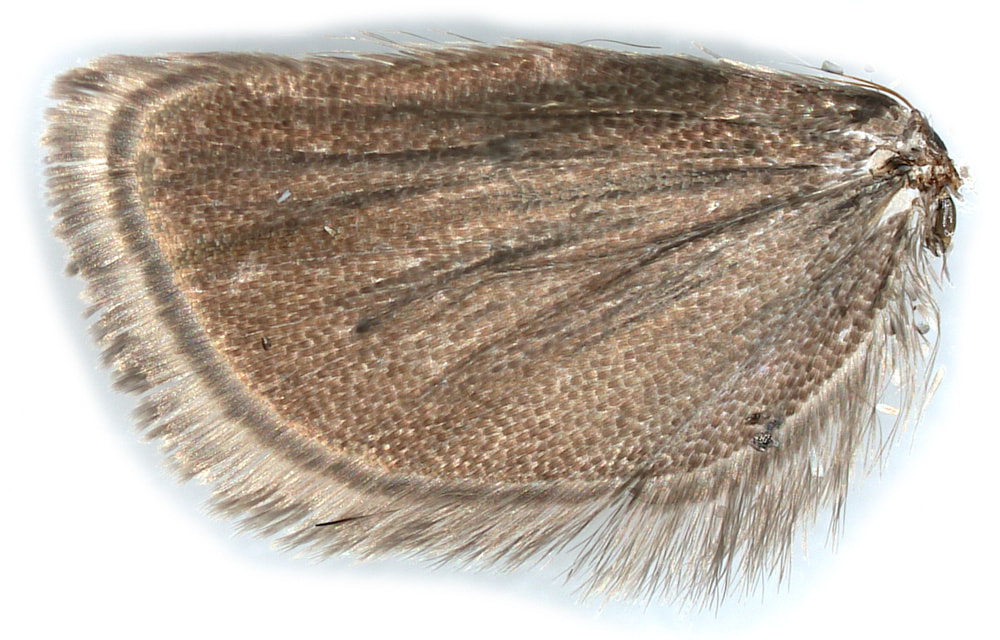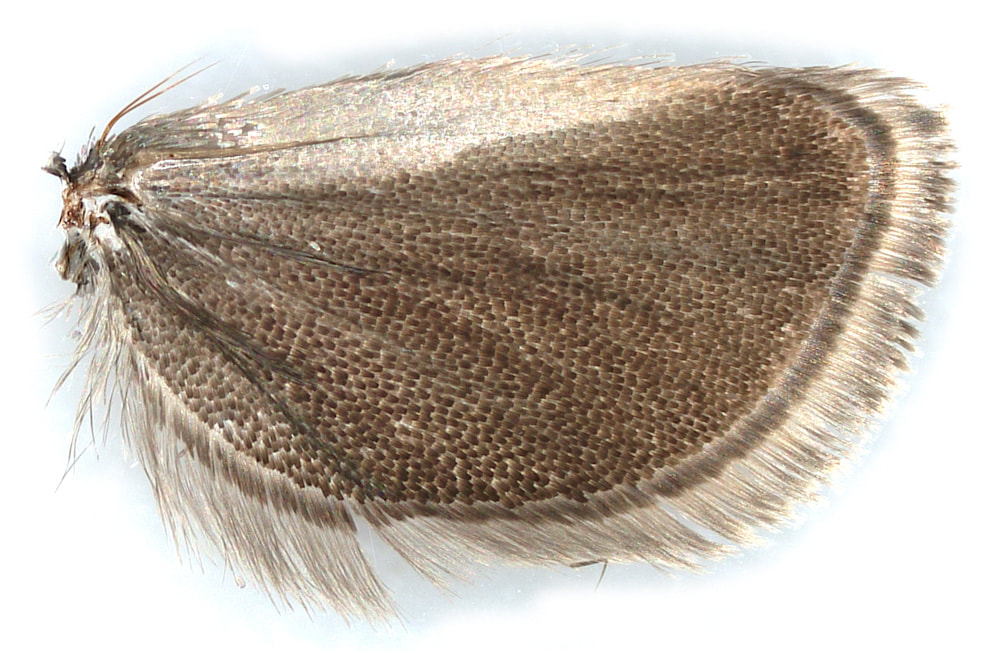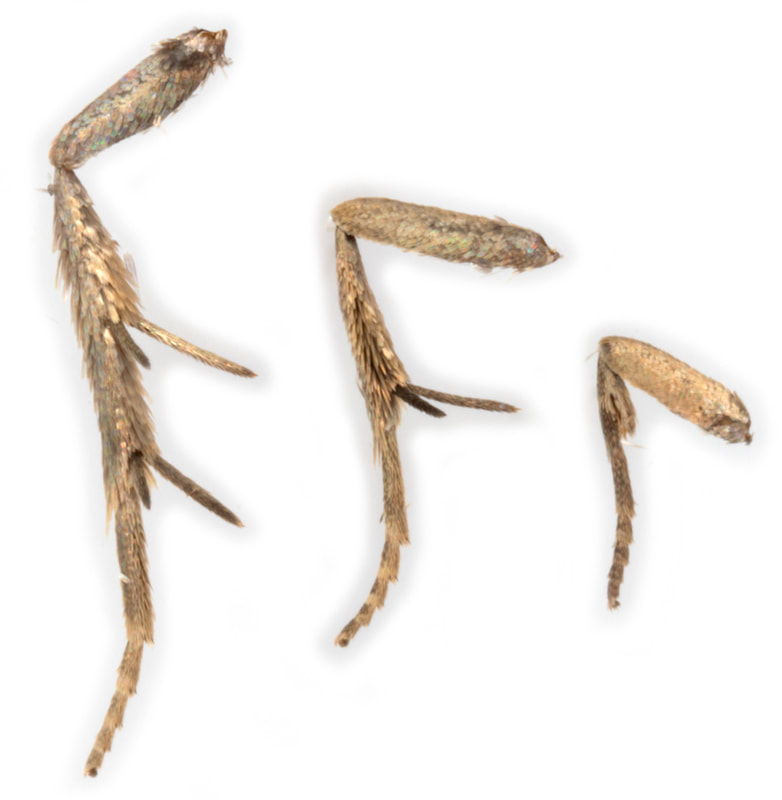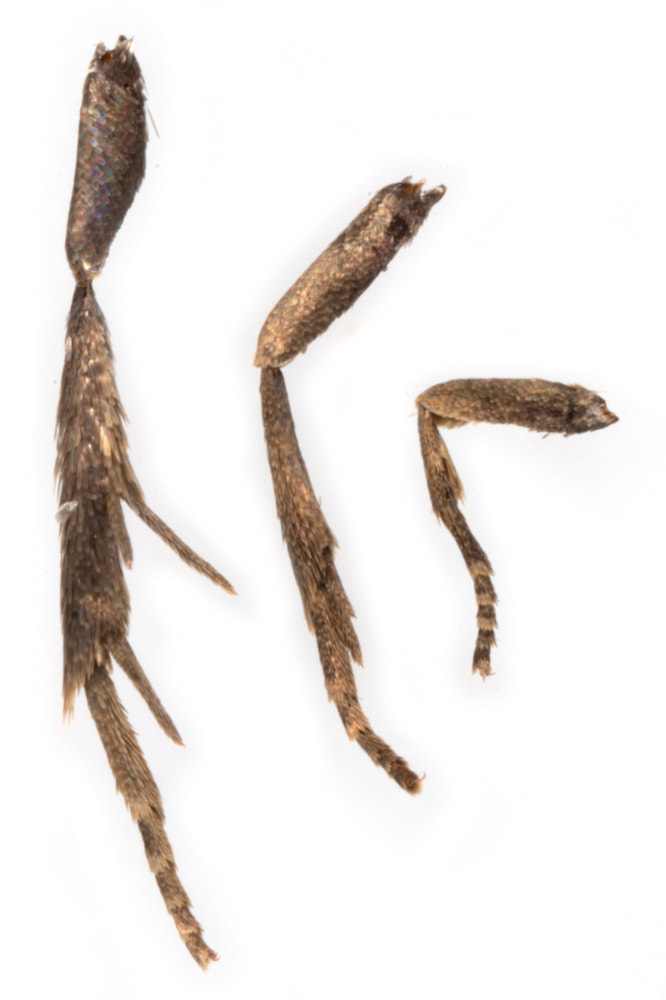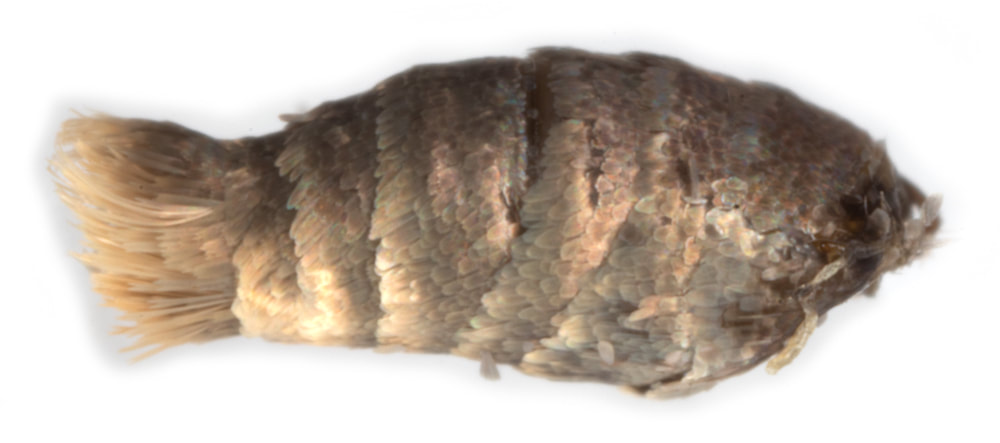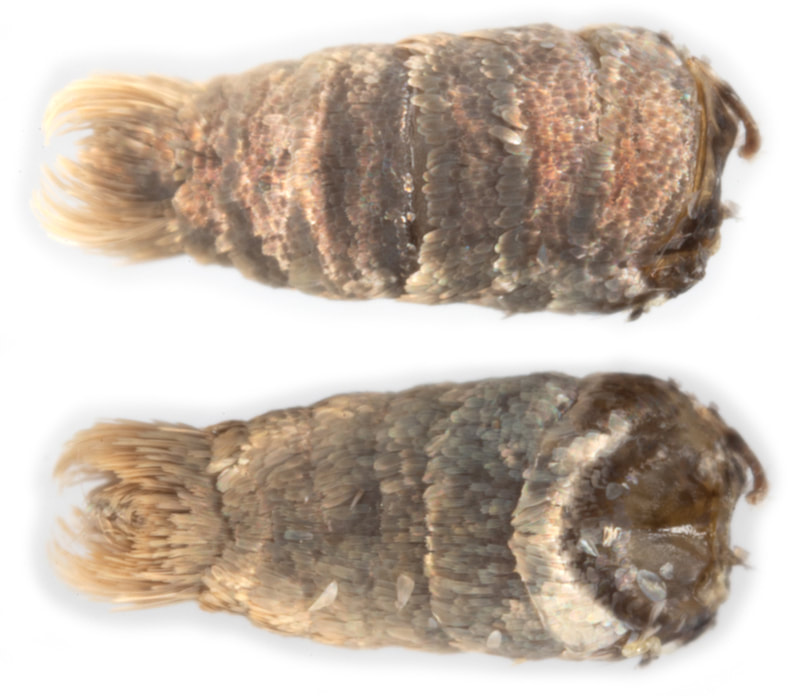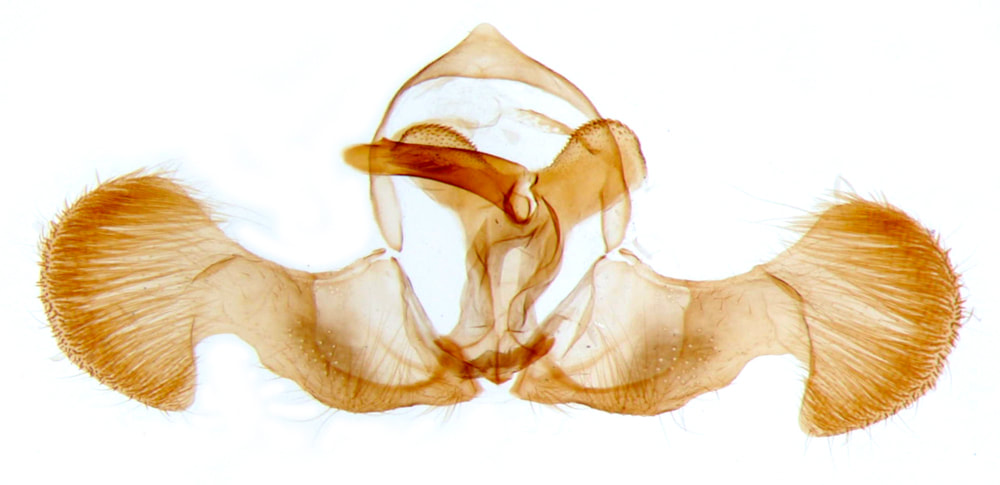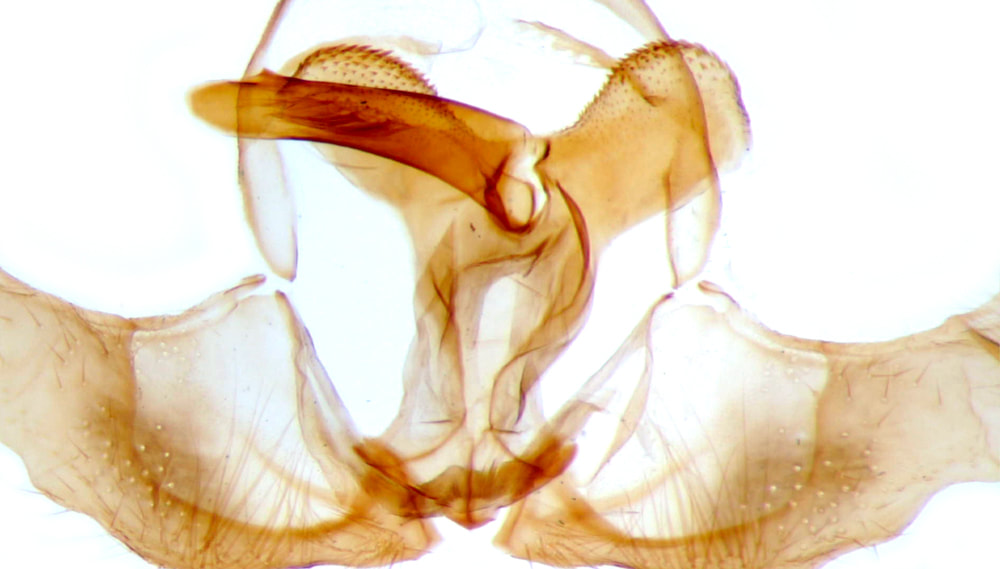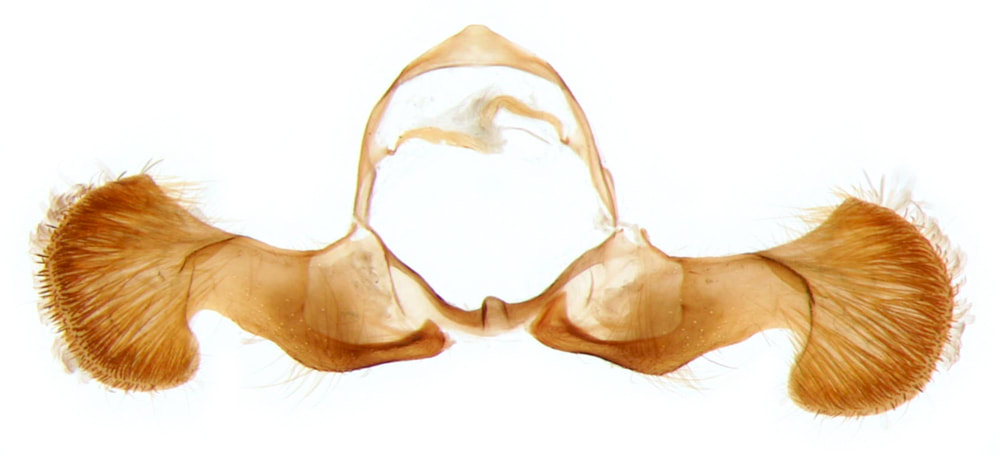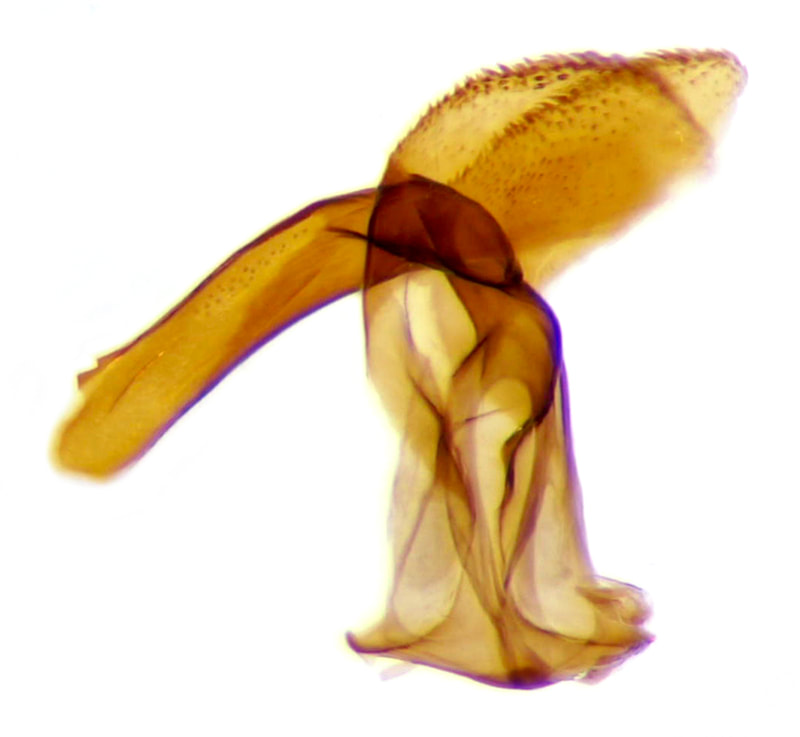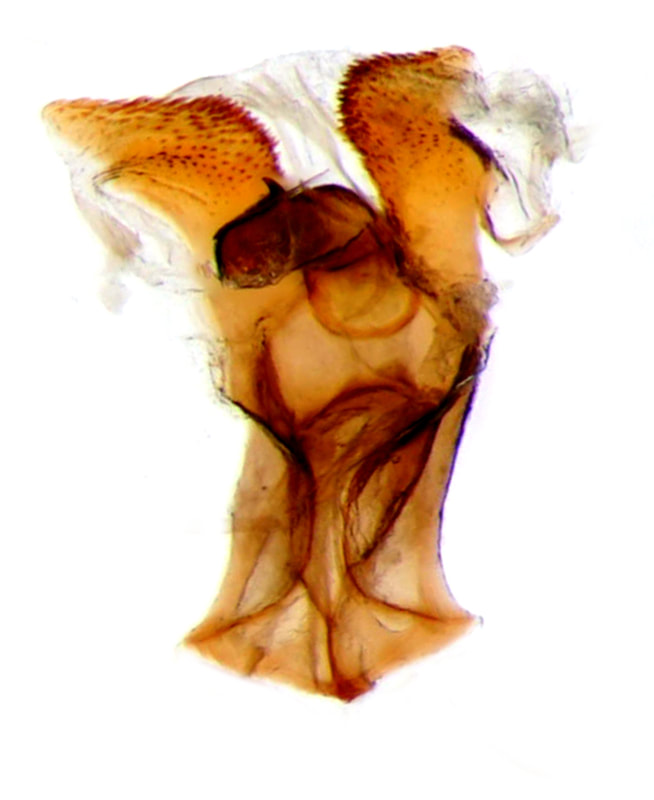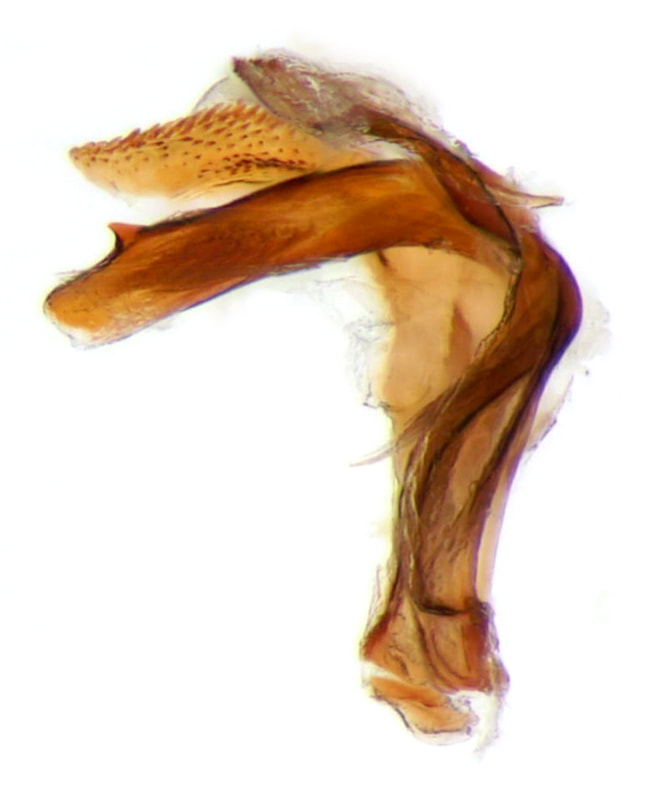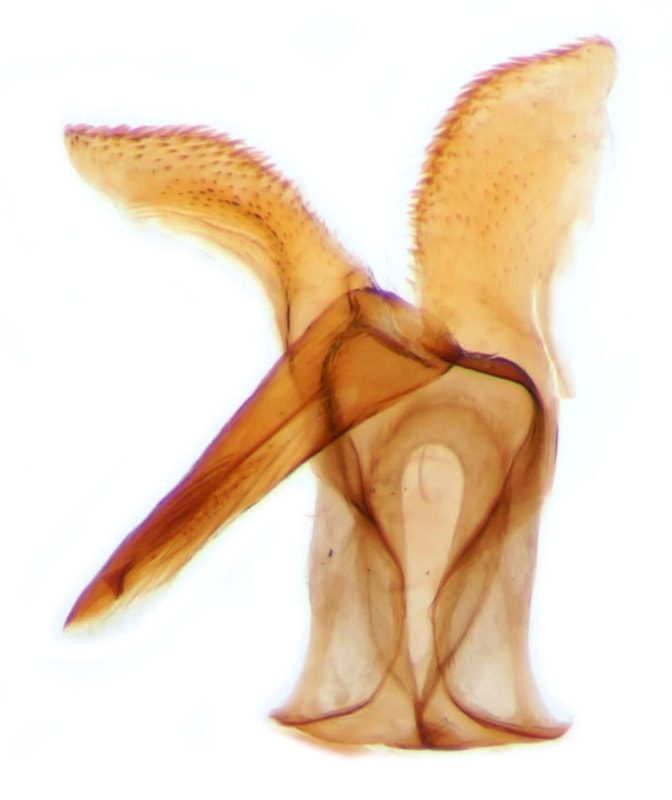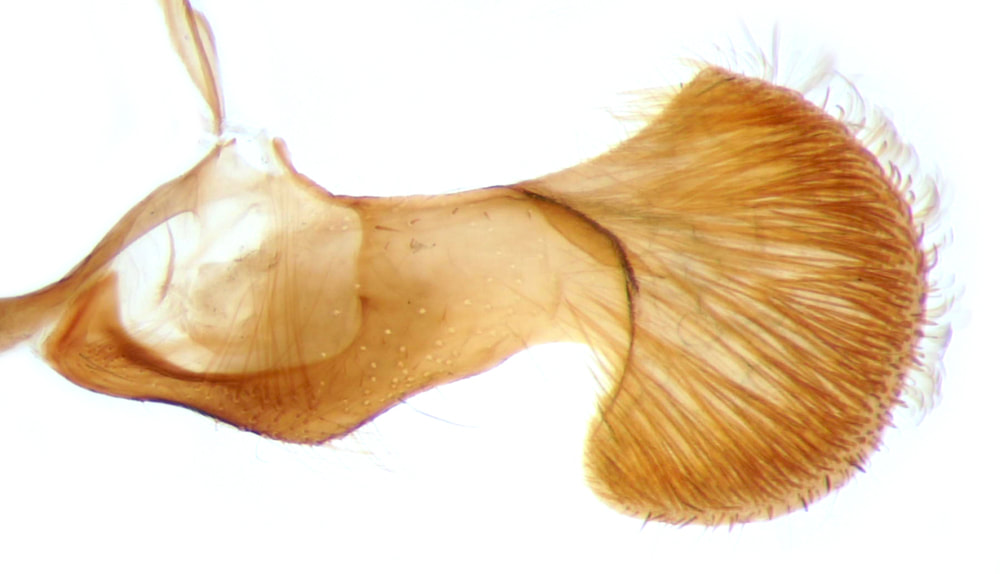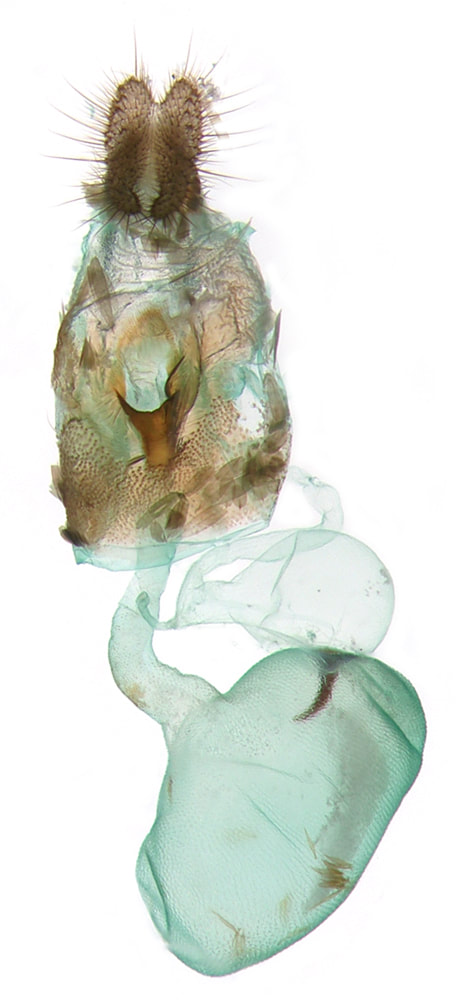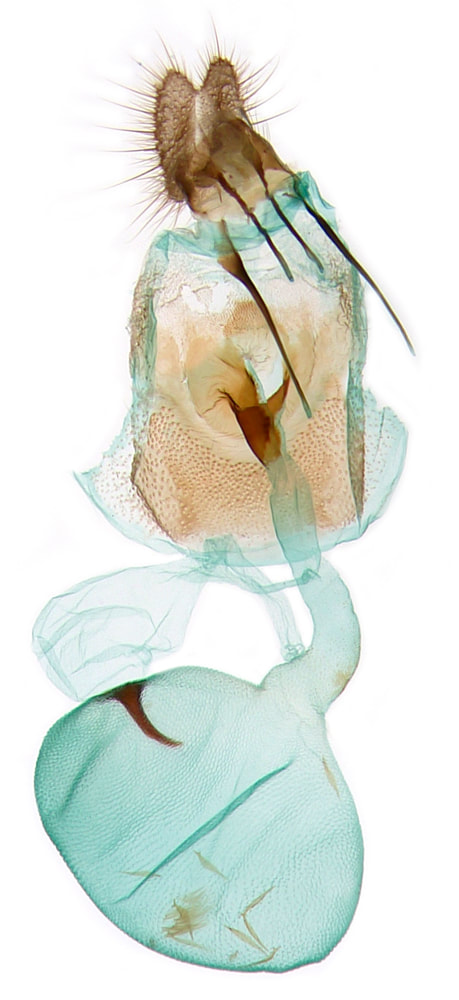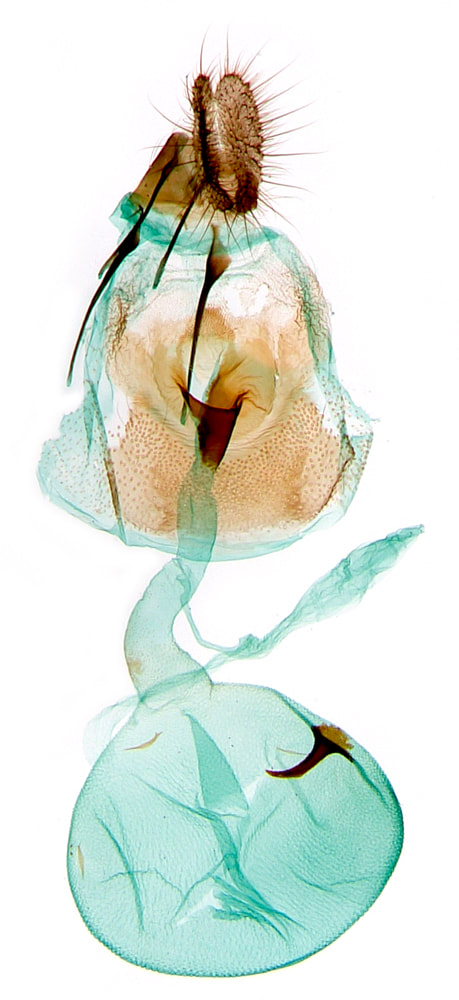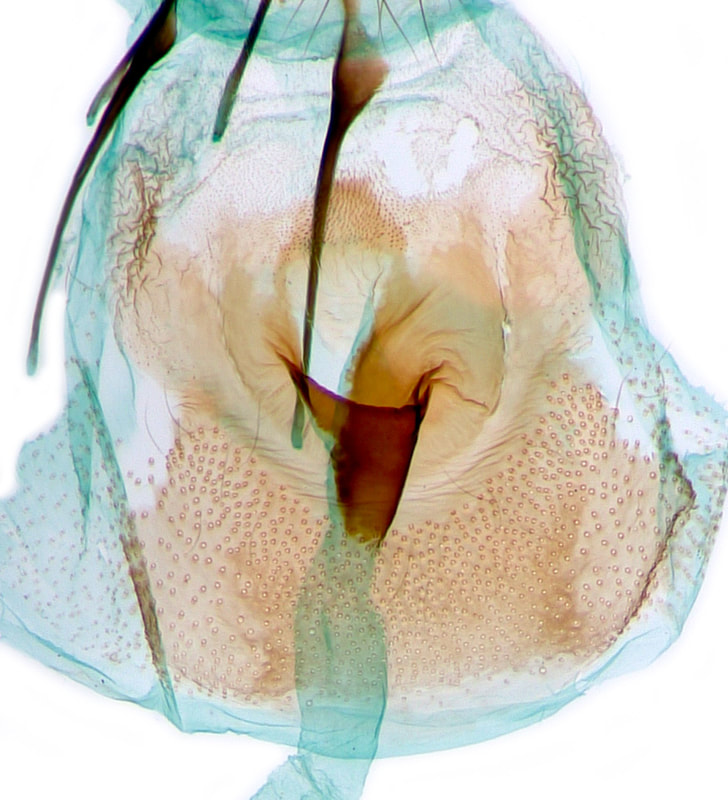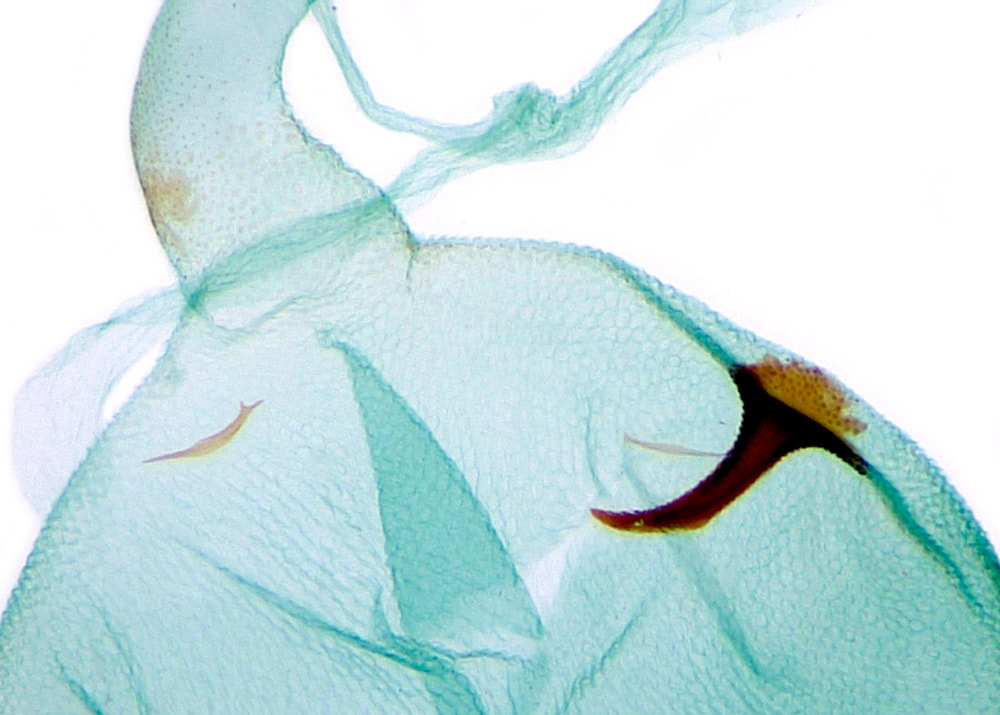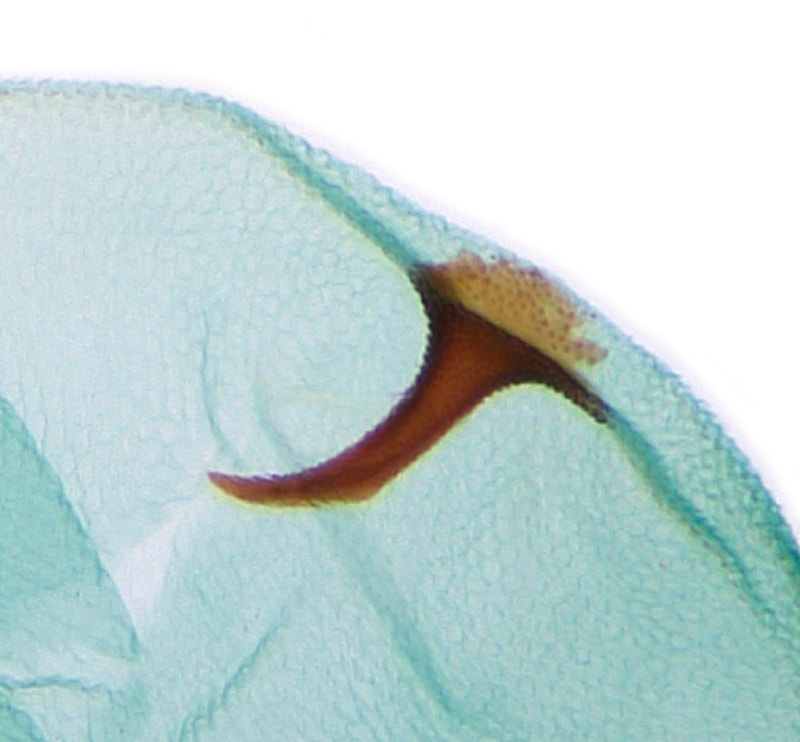49.311 Dichrorampha aeratana (Dingy Daisy Moth)
ws: 12-16mm (BTM), fw 6-8mm (Sterling & Parsons); May-Jun; ox-eye daisy (Leucanthemum vulgare); local throughout GB
ID: D.plumbana/sedatana/aeratana are very similar and require genital examination to identify. D.sedetana/aeratana average larger (fw 6-8mm) than D.plumbana (6-7mm) such that specimens with fw >7mm should not be D.plumbana. D.sedatana flies later (Jun-Jul) than D.aeratana/plumbana such that specimens flying in July should be D.sedatana. D.sedatana has the pale yellow irroration extending to the base of the wing whereas in D.plumbana/aeratana the basal third is largely devoid of yellow colour.
Male genitalia:
D.plumbana - aedeagus without subapical teeth
D.aeratana - aedeagus with subapical tooth/teeth, annelus lobes strongly scobinate
D.sedatana - aedeagus with subapical tooth/teeth, annelus lobes weakly scobinate
Pierce and Metcalfe distinguish the 3 species, D.plumbana/sedatana/aeratana, as being sufficiently differentiated to place them in a separate genus (P&M refer to the two genera as Hemimene and Lipotycha, and to this pair of genera as both 'Dichroramphas' and 'Lypotychidii'). The differentiating feature is the presence of large spatulate anellus lobes in 'Lipotycha' and their absence in 'Hemimene'.
The male genitalia are illustrated and described by P&M (unreliable*), BTM (not very reliable), Sterling and Parsons (more helpful) and are shown at Moth Dissection.
1. Subapical teeth of aedeagus: D.plumbana - tapered without teeth; D.sedatana - 2 tiny dorsal subapical teeth; D.aeratana - 1 tiny dorsal subapical tooth. A comment at Moth Dissection states that the arrangement of teeth is variable and therefore unreliable as a means of distinguishing D.sedatana from D.aeratana.
2. Scobination of annelus lobes: D.plumbana/sedatana - very weakly scobinate; D.aeratana - strongly scobinate (this seems to be reliable)
3. Shape of an annelus lobes: more tapered ('triangular') from base to apex in D.plumbana/sedatana (S&P); more rounded in D.aeratana - this may be reliable, but depends on setting the annelus lobes flat - since the aedeagus is naturally perpendicular to the annelus lobes when both lobes are set flat this is not easy to achieve without at least some distortion, which may be why I do not find this distinction at all convincing when comparing the images at Moth Dissection
4. Emargination of anteroventral margin of valva: D.plumbana/sedatana - narrow; D.aeratana - broad - this also is unconvincing
5. Shape of cucullus: D.plumbana has a narrower cucullus than in D.sedatana/aeratana (BTM) and D.plumbana has a smaller less rounded cucullus (S&P). The images at Moth Dissection suggest that this difference is sufficiently indistinct that it would be unreliable - it is certainly not nearly as apparent as the illustrations in BTM (p304) would suggest.
6. Absolute length of the valva: D.plumbana <1.2, ave 1.1mm; D.sedatana >1.3, ave 1.45mm; D.aeratana >1.2, ave 1.35mm (S&P)
7. Fold of demarcation between cucullus and neck: distinct in D.aeratana, indistinct or absent in D.sedatana (personal observation based on images at Moth Dissection and specimens shown on this page)
* (P&M differentiate a further species L.torrana and confusion reigns in any further attempt to differentiate the species from this source: P&Ms male L.torrana is D.plumbana, their female L.aeratana is D.plumbana, their female L.torrana is D.aeratana and their female L,plumbana is D.aeratana - which leaves their male L.plumbana as unmatched).
Comments on §1&§2. §1 has a single subapical tooth; §2 as 2 subapical teeth close together. Scobination of the annelus lobes was striking in both. Annelus lobes looked tapered in §1 until set flat. Slide prep illustrates near impossibility of demonstrating both the shape of the annelus lobes and the subapical tooth in a single image.
Male genitalia:
D.plumbana - aedeagus without subapical teeth
D.aeratana - aedeagus with subapical tooth/teeth, annelus lobes strongly scobinate
D.sedatana - aedeagus with subapical tooth/teeth, annelus lobes weakly scobinate
Pierce and Metcalfe distinguish the 3 species, D.plumbana/sedatana/aeratana, as being sufficiently differentiated to place them in a separate genus (P&M refer to the two genera as Hemimene and Lipotycha, and to this pair of genera as both 'Dichroramphas' and 'Lypotychidii'). The differentiating feature is the presence of large spatulate anellus lobes in 'Lipotycha' and their absence in 'Hemimene'.
The male genitalia are illustrated and described by P&M (unreliable*), BTM (not very reliable), Sterling and Parsons (more helpful) and are shown at Moth Dissection.
1. Subapical teeth of aedeagus: D.plumbana - tapered without teeth; D.sedatana - 2 tiny dorsal subapical teeth; D.aeratana - 1 tiny dorsal subapical tooth. A comment at Moth Dissection states that the arrangement of teeth is variable and therefore unreliable as a means of distinguishing D.sedatana from D.aeratana.
2. Scobination of annelus lobes: D.plumbana/sedatana - very weakly scobinate; D.aeratana - strongly scobinate (this seems to be reliable)
3. Shape of an annelus lobes: more tapered ('triangular') from base to apex in D.plumbana/sedatana (S&P); more rounded in D.aeratana - this may be reliable, but depends on setting the annelus lobes flat - since the aedeagus is naturally perpendicular to the annelus lobes when both lobes are set flat this is not easy to achieve without at least some distortion, which may be why I do not find this distinction at all convincing when comparing the images at Moth Dissection
4. Emargination of anteroventral margin of valva: D.plumbana/sedatana - narrow; D.aeratana - broad - this also is unconvincing
5. Shape of cucullus: D.plumbana has a narrower cucullus than in D.sedatana/aeratana (BTM) and D.plumbana has a smaller less rounded cucullus (S&P). The images at Moth Dissection suggest that this difference is sufficiently indistinct that it would be unreliable - it is certainly not nearly as apparent as the illustrations in BTM (p304) would suggest.
6. Absolute length of the valva: D.plumbana <1.2, ave 1.1mm; D.sedatana >1.3, ave 1.45mm; D.aeratana >1.2, ave 1.35mm (S&P)
7. Fold of demarcation between cucullus and neck: distinct in D.aeratana, indistinct or absent in D.sedatana (personal observation based on images at Moth Dissection and specimens shown on this page)
* (P&M differentiate a further species L.torrana and confusion reigns in any further attempt to differentiate the species from this source: P&Ms male L.torrana is D.plumbana, their female L.aeratana is D.plumbana, their female L.torrana is D.aeratana and their female L,plumbana is D.aeratana - which leaves their male L.plumbana as unmatched).
Comments on §1&§2. §1 has a single subapical tooth; §2 as 2 subapical teeth close together. Scobination of the annelus lobes was striking in both. Annelus lobes looked tapered in §1 until set flat. Slide prep illustrates near impossibility of demonstrating both the shape of the annelus lobes and the subapical tooth in a single image.
§1 Foulness, Essex; 29/05/2020; male; fw 6.4mm; valva 1.35mm; by sweeping ox-eye daisy
§2 Foulness, Essex; 29/05/2020; male; fw 6.0mm; valva 1.37mm; by sweeping ox-eye daisy
§3 Orlestone Forest, Kent; 18/05/2020; male; fw 6.7mm (gen. det.)
§4 Orlestone Forest, Kent; 17/06/2020; male; fw 6.0mm
§5 Ballindalloch, Moray; 27/06/2021; female; fw 6.6mm; to light
All images © Chris Lewis
§2 Foulness, Essex; 29/05/2020; male; fw 6.0mm; valva 1.37mm; by sweeping ox-eye daisy
§3 Orlestone Forest, Kent; 18/05/2020; male; fw 6.7mm (gen. det.)
§4 Orlestone Forest, Kent; 17/06/2020; male; fw 6.0mm
§5 Ballindalloch, Moray; 27/06/2021; female; fw 6.6mm; to light
All images © Chris Lewis
Page published 09/06/2020 (§1-2) | §3 added 16/01/2021 | §4 added 24/01/2021 | §5 added 30/08/2021
